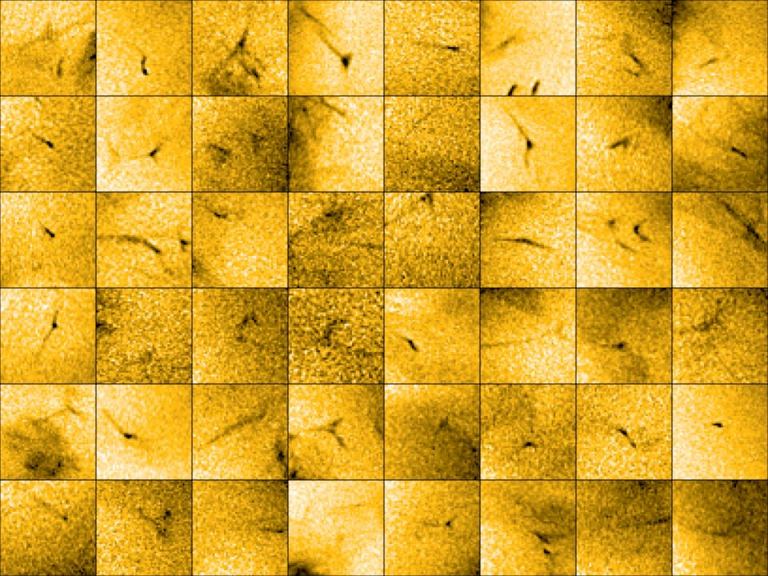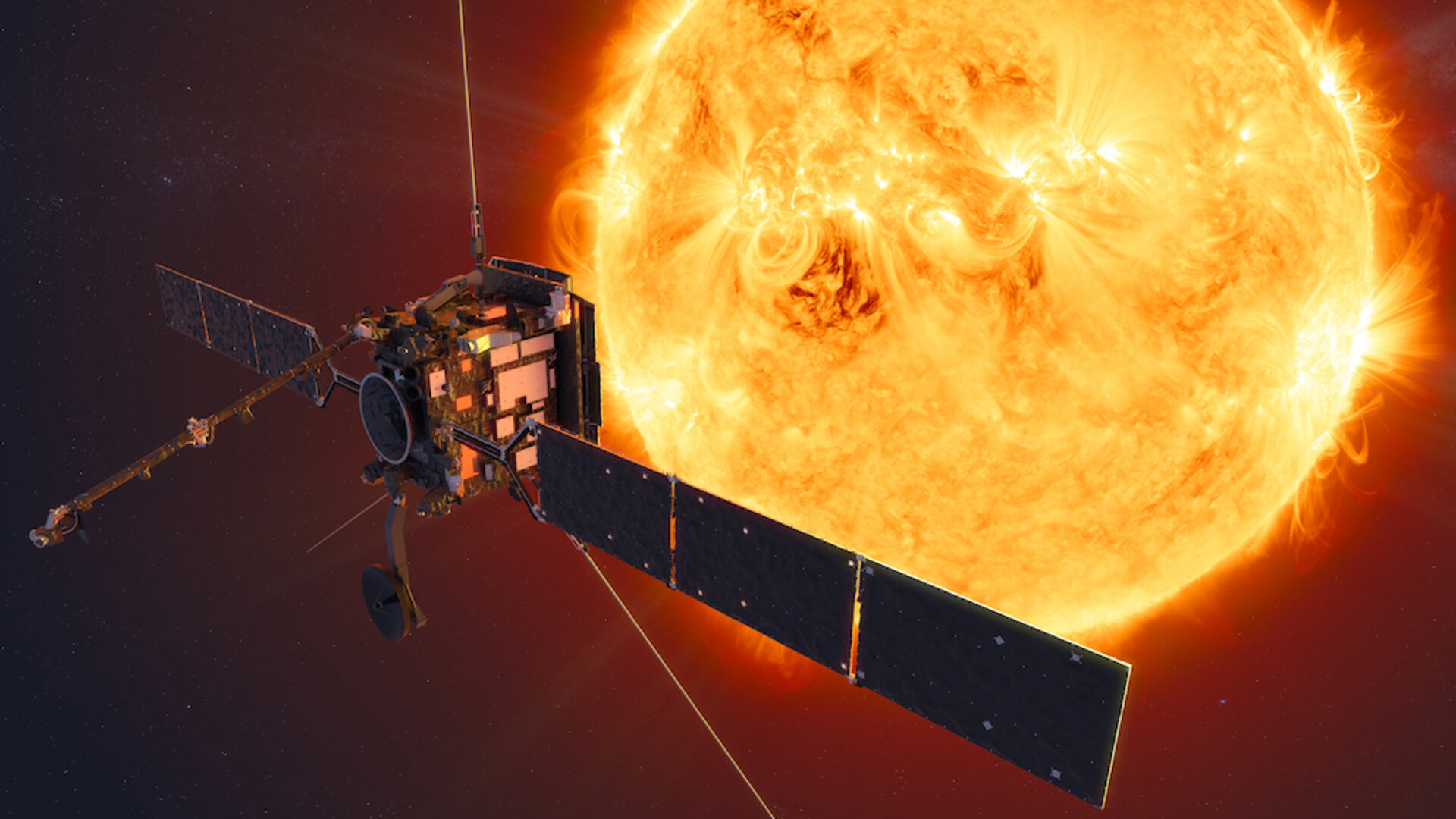
Scientists spot a new and strange phenomenon on the Sun
Decades of astronomical inquiry into the mysteries of the solar wind have taken a significant leap forward, as scientists aboard the ESA/NASA Solar Orbiter spacecraft have potentially identified the driving force behind this enigmatic phenomenon. Termed "picoflares," these minuscule bursts of energy, flashing from the Sun's corona at a staggering 100 kilometers per second, have emerged as the leading candidate to power the solar wind.
Since the initial direct observations of the solar wind in 1959, scientists have grappled with understanding the mechanisms that fuel this continuous stream of charged particles. However, new insights provided by the Solar Orbiter's cutting-edge extreme ultraviolet studies, centered on a coronal hole situated at the Sun's southern pole, appear to have cracked the code.
The revelations stem from meticulously detailed observations that have unveiled fleeting, faint phenomena associated with tiny plasma jets expelled from the Sun. These observations, facilitated by the Solar Orbiter's high-resolution and high-cadence images, have allowed astronomers to detect these minuscule jets, leading to what could be a pivotal discovery.
"We could only detect these tiny jets because of the unprecedented high-resolution, high-cadence images produced by EUI," explained Lakshmi Pradeep Chitta of the Max Planck Institute for Solar System Research, Germany. In a comprehensive paper outlining their findings, Chitta and the team elaborate on the observations that have transformed our understanding.
At the core of this breakthrough lies a movie generated from the Solar Orbiter's observations, captured on March 30, 2022. This visualization portrays a 'coronal hole' near the Sun's southern pole, wherein these small jets manifest as fleeting flashes of intense light. Each of these jets discharges charged particles, known as plasma, into the void of space. Their significance could lie in their potential to be the source of the solar wind.
The solar wind holds significant sway over various celestial phenomena within our solar system, influencing magnetic fields around planets such as Earth and contributing to space weather events such as the mesmerizing auroras. Additionally, the solar wind shapes the plasma tails of comets as they orbit the Sun.

While the existence of the solar wind is undeniable, the precise processes that give rise to it have long stumped solar physicists. The bulk of the solar wind is correlated with coronal holes, magnetic formations in the corona that manifest as darkened regions on the Sun's surface. These areas lack the magnetic field lines that typically loop back into the Sun, instead extending outward into the solar system. This creates conduits for plasma to flow along these lines, producing the solar wind. Yet, the critical question of what initiates this process has remained unanswered.
Coronal holes are not exclusive to specific solar regions; they can appear anywhere on the Sun's surface, although they tend to be more frequent around the polar areas. These features appear to be more prevalent and enduring during periods of solar quietness (solar minimum) but are also present during times of heightened solar activity (solar maximum).
The concept of jets and outbursts from the Sun is not novel, and solar physicists have been monitoring various forms of these phenomena. Among them are coronal mass ejections – colossal events that expel substantial quantities of energetic particles into space – as well as X-class solar flares and solar nanoflares. The latter, while less energetic than their larger counterparts, remain highly influential and may contribute significantly to heating the Sun's corona.

The newfound picoflares are even less potent than nanoflares, yet they seem to play a formidable role in the grand scheme. These minute jets, witnessed by the Solar Orbiter, discharge roughly a thousand times less energy than nanoflares. Nonetheless, their energy is primarily harnessed to propel plasma away from the Sun, actively participating in the solar wind's ceaseless flow. Their prevalence suggests they might contribute a more substantial fraction to the solar wind than previously thought.
Despite the progress made, there remains much to uncover about this intricate process. Ongoing studies by the Solar Orbiter promise further elucidation of this mechanism. Andrei Zhukov of the Royal Observatory of Belgium, a collaborator on this research and leader of the Solar Orbiter observing campaign, noted, "One of the results here is that to a large extent, this flow is not actually uniform, the ubiquity of the jets suggests that the solar wind from coronal holes might originate as a highly intermittent outflow."
The Solar Orbiter's mission is far from complete; its orbit is currently centered around the Sun's equatorial regions, but it is poised to transition to polar orbits. This adjustment will enable the spacecraft to study changes in the Sun as the current solar cycle advances, offering a unique perspective on these tiny structures within coronal holes across varying solar latitudes. As the Solar Orbiter continues its voyage, it carries the promise of unraveling more secrets of our Sun's dynamic behavior.
- Related News
- Wheel of Death: new method will help astronauts stay fit in low gravity
- Due to anomalies of Orion spacecraft, lunar exploration program may be delayed for years։ NASA
- TAO Observatory: World's highest telescope to study evolution of galaxies and exoplanets
- Powerful M9.5 solar flare causes radio blackout in Pacific Ocean
- What will happen to the Earth if the Moon disappears?
- Key to conquering the Red Planet: Why is NASA studying solar storms on Mars?
- Most read
month
week
day
- Digital Julfa Network is launching a pan-Armenian centre in the metaverse, on the Fastexverse virtual platform 1000
- Xiaomi unveils exclusive Redmi Note 13 Pro+ dedicated to Messi and Argentina national team 875
- Sparkles: Boston Dynamics unveils a furry robot dog that can dance (video) 834
- Is there a ninth planet in the solar system? Scientists find new evidence 707
- What will happen to the Earth if the Moon disappears? 693
- Internet 500 times faster than 5G tested in Japan: It allows to transfer five movies in HD resolution in one second 689
- Smartphone catches fire in child's hand in Russia 677
- iPhone 16 may get colored matte glass back panel, 7 colors 672
- How to understand how protected a smartphone is from water and dust? 670
- World's largest 3D printer was created in USL It prints 29 meter-long structures 656
- Archive
